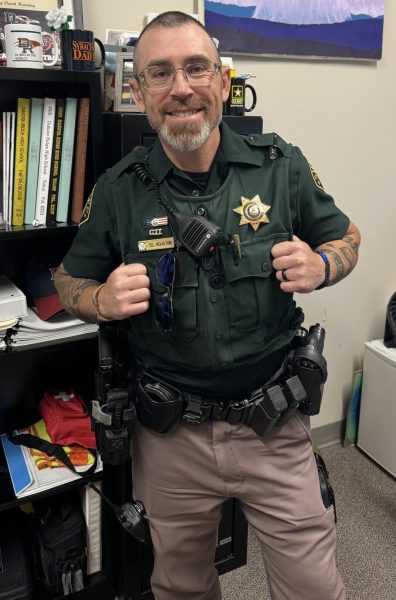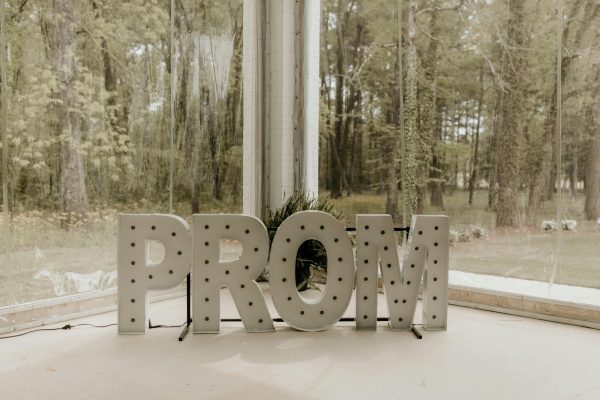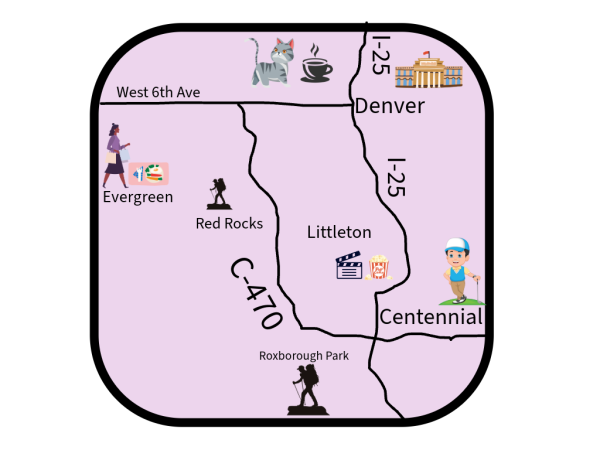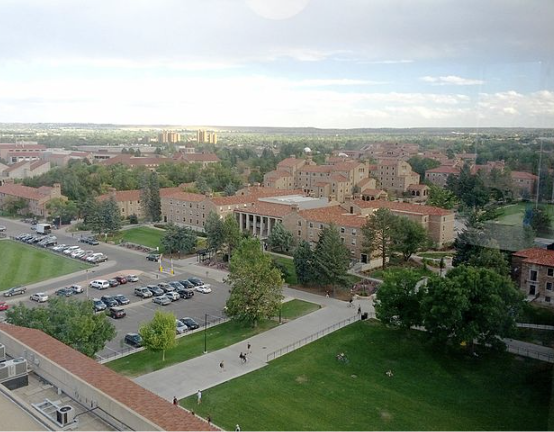Mental Health Awareness Gains More Acceptance

The human brain is filled with questions about life, other people, and itself. No one truly knows what happens in the brain and new information is being discovered all the time.
May 5, 2022
Ever since COVID-19 took the world and flipped it upside down in 2020, many were stuck with nothing to do. This either raised awareness of some mental health issues that went unnoticed or created new ones, most commonly, generalized anxiety disorder, depression, ADHD, eating disorders, etc.
Why now? Well, being stuck inside with nothing to do provided the perfect time for many people to figure themselves out. Many realized that some of their ‘habits’ or ‘normal traits’ were actually symptoms of serious mental illnesses and found a sort of diagnosis (professional or not).
Due to these realizations, people have begun to care and talk more about their own struggles with mental health, along with normalizing these said illnesses, especially through social media platforms.
But despite how widespread mental health awareness is, the majority of people still might not know what mental health struggles look like, nor how to deal with those struggles. Luckily, therapy is becoming more acceptable, along with prescription medications, but still, there are those who just won’t accept the reality. They choose to not encourage the spread of mental health awareness due to the stigma they grew up with.
Generationally, there is a gap between mental health knowledge and acceptance. This may be largely due to the fact that mental illnesses weren’t officially researched until 1946, although it had been briefly mentioned as “mental hygiene” in early documents (around the 1840s) according to a text published by World Psychiatry. For a while, people had no idea what mental illness looked like and how these illnesses impacted day-to-day living.
Due to that lack of knowledge, many just pretended that they were completely fine, and nothing was wrong.
“Growing up with the ‘I’m fine’ group, and then teaching middle schoolers for 20 years…(I’m) really realizing that they’re not fine, we’re not fine, nobody’s fine,” John O’Keefe, Summit Ridge 7th grade English teacher said.
The mentality of the 1950s set the tone for the treatment of mental health–ignore it because looking fine is all that matters.
“If you kept your problems to yourself, then to the outside world you looked okay…it was the appearance,” O’Keefe said.
Television shows like Leave It To Beaver were watched in every home. Leave It To Beaver portrayed what would now be considered the cookie-cutter life: the American Dream. Although the show provided comfort to those who suffered the confusing WWII era, it also created stereotypes that are still present today. Males of today are still dealing with the impact because their grandparents or parents passed on the generational expectation that men are supposed to be emotionally detached. “Emotional detachment can be a serious mental health challenge, particularly when it develops during childhood,” according to a MedicalNewsToday article.
“You gotta be tough and don’t cry and walk it off, rub some dirt on it–that whole mindset kind of thing. And if you weren’t, there was something wrong with you and that follows you. You think you’re an adult into your 20s-30s and stuff until you find out you were wrong,” O’Keefe said. “They [commercials] tend to focus on women. I’m not saying they don’t need help–I’m just saying that a lot of these mental health issues… it’s a little more okay for a female to be emotional. Whereas if a guy shows emotion, it’s even more of a ‘problem.’”
Mentalities similar to those O’Keefe grew up with make it difficult for people to reach out and get support. Or even admit that they need help.
“I still think that people see the need to ask for help, especially for something that is mental health, as a weakness. Compared to if someone fell down and got hurt, it’s not seen as a weakness to ask for help. I don’t know why that is… why there’s this sense of self-pride that you can’t reach out and find help with one another. Or, once you do reach out, it’s difficult,” Dr. Jim Jelinek, DRHS principal, said.
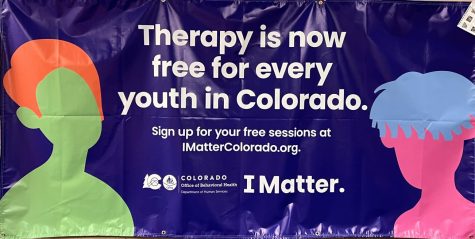
The generational distribution of the stigma creates even more mental health issues. Students who were raised with parents that forced the stigma onto them tend to have the exact mental illnesses that parents hoped to avoid.
“It’s his [her father’s] way of trying to protect me. It’s the way he’s saying he loved me by telling me that it’s [mental illness] not exactly happening because that’s what they [his parents] did to him,” Kerala Parikh (10) said.
Maybe the mentality worked once, but the world has changed, and so should this mindset.
“At some point back in the day, yes, hard work, focus, goal setting, never giving up, that was an attitude that did equal success. After the Great Depression, right, people didn’t take for granted work and money any longer. But there’s been no end to it, no one said when is too much too much?” Nile Smith, DRHS counselor, said. “There are commercials that we all watch–‘Hey life’s too busy to eat, so eat this little thing you can take in your bag or instant soup. Hey, you’re too busy to exercise, so here’s this machine that just shakes your belly until your fat burns away because God-forbid you have time to go to the gym or take your dog for a walk or go out in the sun, get some natural vitamin D. Here’s pills for everything you could possibly ask for to ignore any true aspect of self.’”
But the question remains: where did all of the illnesses come from? Have they always been around and people are just now picking up on it, or are they new?
“My generation probably had some anxiousness too, but at 49 years old, I don’t remember in my high school having a friend, or even a distant pal from a sports team, has an issue, right? I think you guys are all accustomed to hearing about mental health, and I think that’s good… but why’s it so prevalent already? Like, life’s not supposed to be about this. We aren’t here to suffer and make it miserable, and feel this strain and pressure. I thought it was about love and bliss, designing the way we want to live and go out and create something beautiful… maybe even having a happy little family, but my God. Even when I say it out loud, doesn’t that sound a little corny? Why? Because it’s not even cool to be that way, right?” Smith said.
Student Resource Officer, Tony Marchesi, started working in law enforcement in 1984. He was part of a group called the CIT (Crisis Intervention Team) later in his work. The CIT was created to help people deal with their mental illnesses in a healthy way. During his time working with the group he noted that some fellow officers had to go to counseling or they died by suicide because of what they’d seen. The officers dealt not only with domestic crimes, but also with issues where a person may make an attempt on their own life. Marchesi said that he saw the main increase in these behaviors in the 1990’s and 2000’s, when social media had gained popularity.
“I agree 100%, social media has a lot to do with a lot of that… I’ve seen kids show me posts where people commit suicide right on there, which, why isn’t social media–TikTok, stuff like that, allowed on there,” Marchesi said. “People getting bullied, talkin’ about suicide, talkin’ about kids saying ‘yeah go ahead kill yourself’ to another student over social media. Social media, I think, has a lot of bad things to do with the behavior and mental health of a lot of people.”
Social media is used by some as a means of getting validation according to Bonnie Zucker’s article on Psychology Today. “For some, frequent reassurance seeking is addictive, almost like a drug,” she wrote. She encourages taking a break in order to not base mental health on likes, comments, and follows.
Unfortunately, social media has a way of getting under the skin of some, whether it’s what others say or the way they compare themselves to others.
“On social media anyone is vulnerable to anyone…it’s very open, so it’s easy for bad things to happen,” Aidan Purtill (10) said.
While social media platforms are seen as a main cause of mental illness, there are plenty of other situations that play a role.
“I think social media has created a gap, a lack of empathy for one another. So that’s caused angst and anger and frustration. Then on top of that, there’s all that’s happening in the world–whether it’s political or it’s COVID-based– it’s caused a…polarization, if you will, of people,” Jelinek said.
As Dr. Jelinek mentioned, COVID-19 has played a part in mental illness. Everyone felt the impact, whether they were diagnosed, discovered more about themselves, or gained a mental illness they didn’t previously have.
Through the year 2020, a research project conducted by the National Institute of Mental Health reported that out of 52.9 million adults over the age of 18 living in the U. S., 21% (11,109,000) of them had a mental illness.
“You guys were asked to stop your lives. You guys were told to mask up, hide, be fearful of something else that you can add to your world, stay at home, teach yourselves how to learn, your teachers are trying to teach you through a screen, but don’t do this, don’t do that, keep on pounding away at your math homework, keep on pounding away at this,” Smith said.
According to an Academia article by Martin Prince, a WHO report in 2005 stated that, “Depression predicts the onset and progression of both physical and social disability,” though the correlation is wildly complex. The article summarizes the correlation between mental health and physical health, believing that humans can’t have one without the other.
Mr. O’Keefe agrees. “I definitely would like it, for people to be a little more okay with treating mental health like physical health because we spend a lot of time focusing on physical health,” O’Keefe said.
The issue is that these illnesses are often hard to see, so people don’t know when to get help or reach out for help.
“I think people see it as just they’re [students] misbehaving, just labeled as a behavior problem, rather than a ‘hey there may be something here that we have to work with this student,’” Jelinek said.
Luckily, many social media platforms are beginning to share knowledge about mental illnesses. Even some celebrities are speaking out about their struggles, including 4-time Olympic Gold Medalist Simone Biles. She took a mental health break and opted out of participating in a competition, raising both praise and condemnation.
Many spoke out on social media posts in support of Biles and shared possible reasoning as to why she needed a break.
“I’ve seen tons of [posts] like spreading awareness, that kind of thing. Awareness for help… yeah all over social media, all the time,” Purtill said.
Ultimately, though, it’s up to the person reading the posts and articles about mental illnesses to choose to learn more about themselves and the people around them — this could help to better manage serious emotions.
“The uncontrollable tears, right? The emotions. And the hard part is those students being asked, where do you think this is coming from? And it’s hardest to hear, I don’t know,” Smith said. “That may be a superficial answer, I know. I think we all have the answers to our stuff, it’s just a matter of who’s connected and who’s not. Who’s wanting to work towards being connected to work toward their true self.”
Jefferson County has been working on building a community that accepts everyone, regardless of their differences. Free therapy is available, and talking to trusted adults is encouraged. People want to speak out and share their stories. That’s why Dakota Ridge has a Student Voice club. The sense of community in the Jeffco schools has been considered very accepting and supportive.
“I’ll give you an example. A few years ago, we [principals from Columbine, Chatfield, and Dakota Ridge] had this idea, and it started from Dakota Ridge, to put the three high schools together for a dance and do it around raising money for the American Cancer Society. So the three principals, Columbine, Chatfield, and Dakota Ridge, got together with the student body and activity directors, and we started to plan this,” Jelinek said. “Our colleagues, the other high schools in the district, thought we were crazy. There’s no way you’ll put them together at a dance. They’ll fight, they’ll have all kinds of problems. It became Chakotabine…We raised close to $20,000… See, we can be as competitive as we want with each other, we want to win every time…but at the end of the day, when there’s a cause, when there’s a need, this community down south, these three high schools, will come together and support each other in a bigger way than I have ever seen in any other place that I’ve ever worked in or… in the district.”
The Jefferson County community seems to be working towards providing a safe environment for people to turn away from their previous stigmas and share their experiences with mental health. In fact, all of society is starting to finally accept mental illness as something that should be taught, not hidden. As long as this mentality continues, there is hope that the future will hold a welcoming and knowledgeable community for those who struggle with mental health issues.
If you or someone you know is at risk of suicide, please call the National Suicide Prevention Lifeline at 800-273-8255, text TALK to 741741 or visit SpeakingOfSuicide.com/resources for additional resources.



